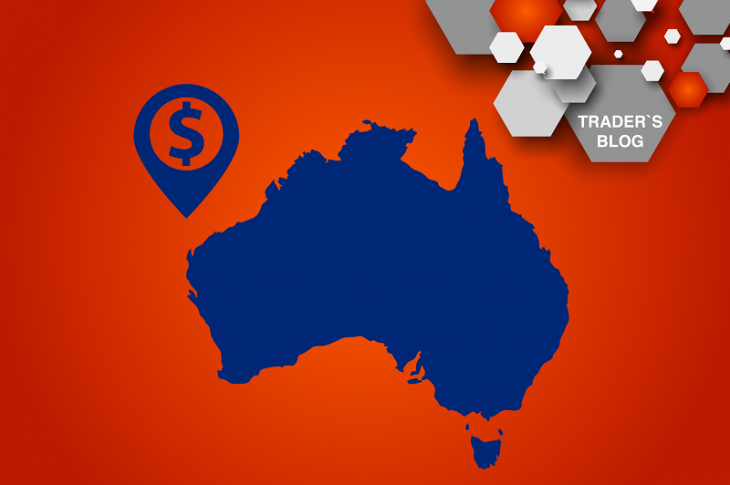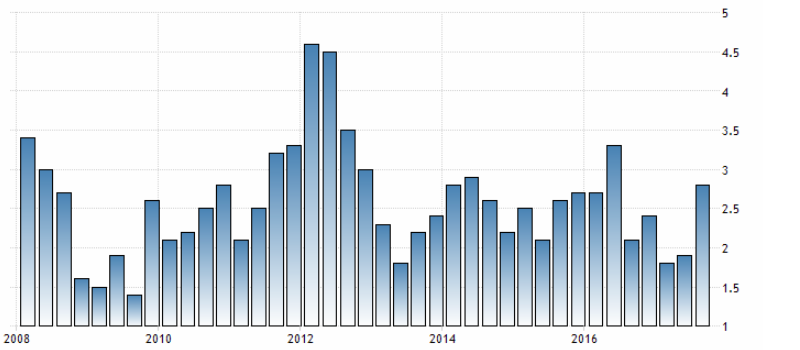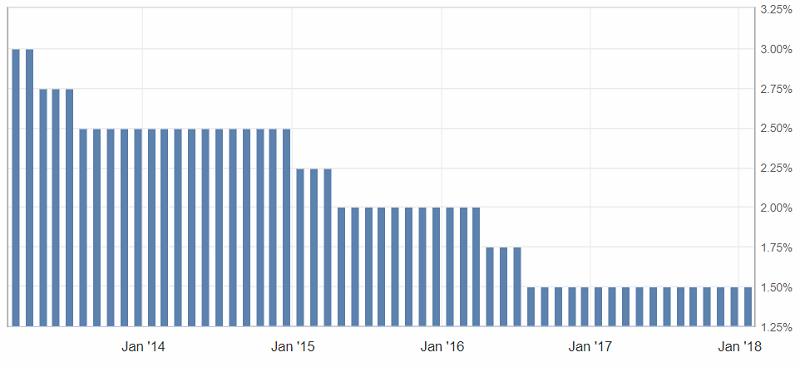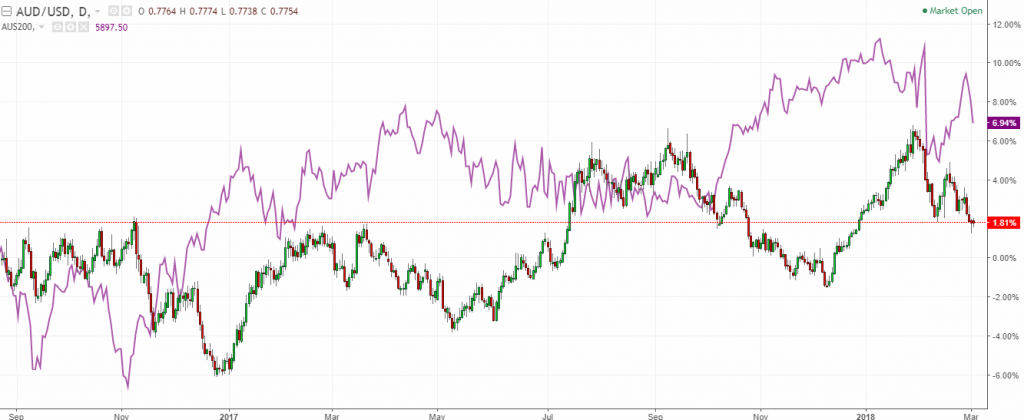
The Australian Dollar (AUD) – a feature of trading on cross-rates. Anton Hanzenko
The Australian dollar is one of the popular currencies traded on cross rates, which is due to the very high liquidity and the degree of forecasting. At the same time, the Australian dollar refers to commodity currencies, which allows us to draw an analogy with the dynamics of raw materials.
Data on the economy of Australia
The economy of Australia is one of the largest economies in the world and is characterized by the most stable GDP growth.
Australia’s GDP growth rate (y/y)
The central bank of Australia is the Reserve Bank of Australia (RBA) whose policy, like most of the world’s Central Banks, remains very soft. In this case, the RBA leaves the key interest rate above zero, namely at around 1.50%.
Current Australia rates
Against the backdrop of the world’s central banks, this sets Australia as more promising for investment. And as a result, the Australian dollar is more attractive for investments.
Australia is rich in minerals, which positions the Australian dollar as a commodity currency. This is mainly mining, but also at a high level of development has agriculture, industry, energy and services, which brings the lion’s share of GDP.
At the same time, Australia has close trade relations with East Asia: Japan, China, South Korea, India. The main trading partner of Australia is China, which in turn explains the significant dependence of the Australian dollar on statistics on China. So, often weak statistics on China, could negatively affect the dynamics of the Australian currency and vice versa. Also, the Australian responds well to significant data on Australia and on news about raw materials: growth/decline in demand for iron ore, etc.
Stock index of Australia S & P/ASX 200, which has an inverse correlation with the pair USD/AUD, can also act as a leading indicator.
Correlation of the Australian S & P/ASX 200 index and the AUD/USD currency pair.
The Australian currency has a very high degree of correlation in related currencies, which is well traced in the correlation table.
Correlation table
The Australian dollar can be considered a very flexible currency in terms of analysis and trend strategies, which in fact puts the Australian in popularity with the euro and the US dollar. Also, cross-rates, due to the high degree of trade in the trend, are suitable for novice traders.
Interesting fact
In the jargon of traders, a pair of AUD/USD or the Australian dollar is called “audi”, “kangaroo” or “ossi”.
If you break 10 Australian dollars in half, then each half can legally be used as $ 5.
Anton Hanzenko



